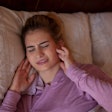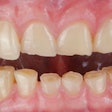
Nearly 100 million people in the U.S. have temporomandibular disorders (TMDs), and approximately 3 million splints are made each year for their treatment, but questions remain about their effectiveness. Therefore, the authors of a new study sought to provide more evidence on their effects.
Stabilization splints appear to be effective for TMDs in the short term, but they are no more useful than other therapies in the long term, they reported in PLOS One (February 6, 2017).
The stabilization splint "may have a significant role in treating TMDs in short term, while its effect is equalized with other therapeutic modalities in long-term follow-up," wrote the study authors, led by Jovana Kuzmanovic Pficer from the department of medical statistics and informatics at the University of Belgrade School of Dental Medicine in Serbia.
Taking a closer look
Etiological factors for TMDs are numerous, not always clearly defined, and insufficiently studied, the authors explained. Many therapies are used to treat TMDs, and the use of stabilization splints is quite common. The splint is a flat occlusal plate made of hard acrylic or polycarbonate material, and it is designed to promote occlusal stability and decrease muscle tension.
“Stabilization splint may have a significant role in treating TMDs in [the] short term, while its effect is equalized with other therapeutic modalities in long-term follow-up.”
However, randomized controlled trials assessing TMD treatments present conflicting results, and systematic reviews don't provide clear evidence of whether stabilization splint use is justified, they noted.
To better understand the effects of the stabilization splint on TMDs, the researchers of the current study conducted a systematic review and meta-analysis on all randomized controlled trials or quasi-randomized controlled trials in the Medline, Web of Science, and Embase databases and published in any language through October 2016 in which the stabilization splint was compared with a different control group for TMD treatment.
The included studies were required to have TMD patients with more than one of the following symptoms or signs:
- Myofascial pain and/or pain in the temporomandibular joint (TMJ)
- Myofascial pain and/or pain in the TMJ on palpation
- Muscle tenderness
- Limitation or deviation in mandibular range of motion
- Limited mouth opening with/without reduction
- Presence of sound effects in the TMJ
- Headache or earache
The studies compared the stabilization splint (Michigan splint, Tanner appliance, Fox appliance, centric relation appliance) to a control group that included any of the following treatments:
- Nonoccluding splint
- Occlusal oral appliances
- Physical therapy
- Behavioral therapy
- Minimal treatment group (exercise and counseling)
- No treatment
The current study examined 33 randomized controlled trials that included 1,779 patients, with stabilization splints used in 848 of them and 931 patients in control groups. A subset of 15 studies with 1,118 participants evaluated pain intensity, and subgroup analyses studied the effect of the splint in patients with TMDs of muscular origin.
In their analysis, the researchers found that the stabilization splint significantly reduced pain in the short term (less than three months). These results remained for the pooled results of 10 studies conducted on pain with TMDs of muscular origin. They also found that the stabilization splint was significantly more effective than the nonoccluding splint, while they found no difference between the stabilization splint and occlusal oral appliances.
"This indicates that patients with TMDs besides stabilization splint may benefit from other occlusal appliances in reducing symptoms of TMDs," the authors wrote.
In addition, the researchers found that the stabilization splint was significantly more effective at reducing pain intensity in the short term. This was the case for TMDs of muscular origin examined in six studies as well.
However, they found no difference in pain reduction or pain intensity between the stabilization splint and other treatments for the longer term (three months or longer).
The results indicated a significant decrease in muscle tenderness with the stabilization splint in the short term, according to the authors. Maximum mouth opening also improved only in the short term. The effect of the splint was greater in patients who used it for 24 hours compared with those who used it only at night.
"Based on the results, wearing the splint 24 hours per day stabilizes the jaw position resulting in occlusal stability," they wrote.
Higher quality research still needed
The study authors noted that only low quality of evidence was available for the study's primary outcomes in both the short and long term. Secondary results had moderate quality of evidence in the short term. They recommended that future research on TMD treatments use better study design and more clearly defined criteria for assessing efficacy, as well as include long-term results.
However, they noted that a strength of their study was the use of two primary outcomes for pain assessment followed by several secondary outcomes, which provided more valid data. Also, dividing studies by the origin of TMDs allowed for deeper insight into which populations might benefit more from using the stabilization splint, they added.
"Our meta-analysis confirmed, evaluating pain outcomes and through reduction of muscle tenderness and maximum mouth opening, that patients with myogenous TMDs may have significant benefit from stabilization splints," the study authors wrote.



















